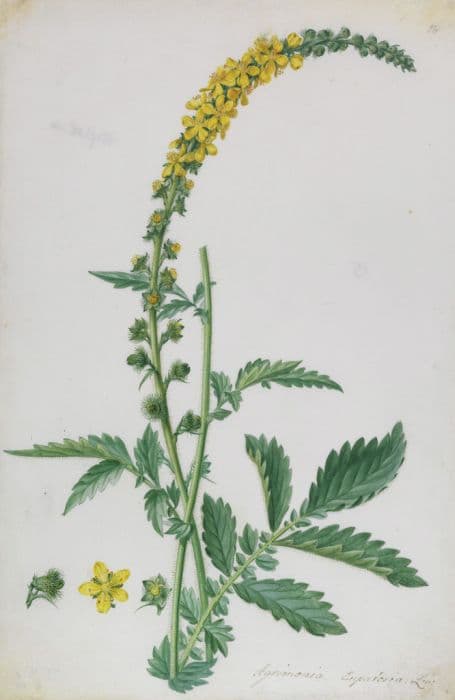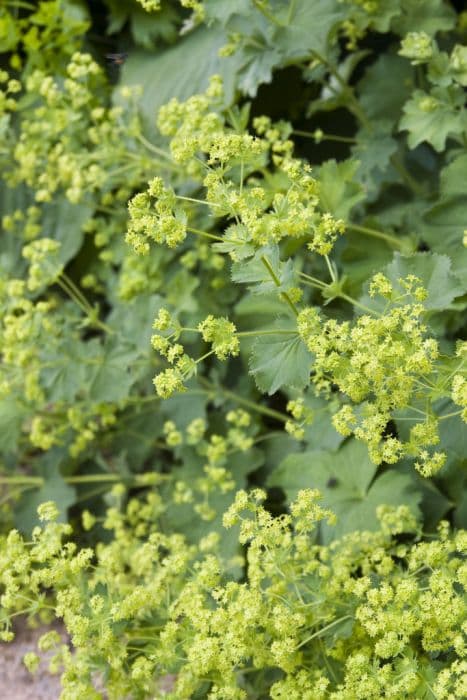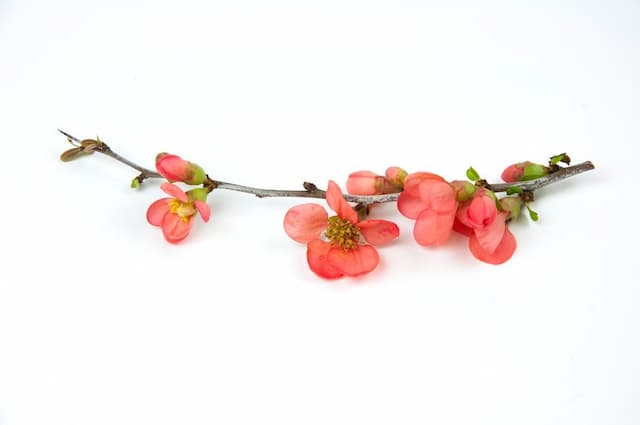Apple Malus domestica 'Peasgood's Nonsuch' (C)

ABOUT
The plant known as 'Peasgood's Nonsuch' is a type of apple tree that produces large and attractive fruits. The apples from this variety are notable for their impressive size and often display a beautiful blend of colors. The skin of the fruit typically shows a mix of greens and reds, with the red hues ranging from deep to bright, often with a striped or flushed pattern. The flesh inside is creamy-white, firm, and juicy. The leaves of the tree are a classic apple green, and their shape is typically oval with a slightly serrated edge. In spring, the tree showcases a lovely display of blossoms that are pink when in bud, opening to a white color. These blossoms are not only aesthetically pleasing but also vital for pollination and the subsequent development of the fruit. Overall, 'Peasgood's Nonsuch' is a visually pleasing plant with the added benefit of yielding delicious and large apples.
About this plant
 Names
NamesSynonyms
Peasgood's Nonsuch Apple, Peasgood Nonsuch.
Common names
Malus domestica 'Peasgood's Nonsuch'.
 Toxicity
ToxicityTo humans
The plant in question is an apple tree, specifically the 'Peasgood's Nonsuch' cultivar. Generally, apples are not toxic to humans and are widely consumed as a safe and nutritious fruit. However, the seeds of the apple contain a compound called amygdalin, which can release cyanide when digested. Eating an extremely large number of apple seeds could lead to cyanide poisoning, which can cause headache, confusion, agitation, difficulty breathing, and can be life-threatening. It is important to note that accidental ingestion of a few apple seeds is typically not harmful due to the low amount of amygdalin they contain and the body's ability to detoxify small amounts of cyanide.
To pets
The 'Peasgood's Nonsuch' is an apple tree, and apples are not generally toxic to pets either. However, pets should not eat the seeds of the apple, as they contain amygdalin, which can release cyanide during digestion. Symptoms of cyanide poisoning in pets may include difficulty breathing, panting, dilated pupils, and shock. If consumed in large enough quantities, it can be fatal. The fruit's core and stem should also be avoided as they can be a choking hazard or cause gastrointestinal blockage. It is always best to remove the seeds and core before offering apples to pets as a treat.
 Characteristics
CharacteristicsLife cycle
Perennials
Foliage type
Deciduous
Color of leaves
Green
Flower color
White
Height
10-15 feet (3-4.5 m)
Spread
12-15 feet (3.6-4.5 m)
Plant type
Tree
Hardiness zones
5
Native area
Asia
Benefits
 General Benefits
General Benefits- Aesthetic Appeal: Provides visual interest with its blossoms in spring and fruits in early autumn.
- Shade and Shelter: Offers shade and shelter in gardens and landscapes when mature.
- Fruit Production: Yields edible apples which can be eaten fresh, baked, or used in various culinary preparations.
- Wildlife Attraction: Attracts pollinators during flowering and provides food for birds and other animals with its fruit.
- Home Gardening: Suitable for home gardens due to its manageable size and attractive form.
- Cultural Significance: Apples have been a storied fruit throughout history and offer cultural and traditional value.
- Economic Value: Can contribute to local and home economies through the sale of fruit.
 Medical Properties
Medical Properties- Source of Dietary Fiber: Apples from Malus domestica can provide dietary fiber, which is beneficial for digestive health.
- Rich in Antioxidants: Apples contain antioxidants such as vitamin C and quercetin, which can help protect the body from oxidative stress and may reduce the risk of chronic diseases.
- Cardiovascular Health: Consuming apples has been associated with a reduction in the risk of cardiovascular diseases, possibly due to the presence of soluble fibers and polyphenols.
- Blood Sugar Regulation: The fiber in apples can slow the absorption of sugar, helping to regulate blood sugar levels.
- Weight Management: Apples are low in calories and high in fiber, which can contribute to satiety and aid in weight management.
- Potential Cancer Prevention: Some studies suggest that the phytochemicals found in apples may help reduce the risk of developing cancer.
 Air-purifying Qualities
Air-purifying QualitiesThis plant is not specifically known for air purifying qualities.
 Other Uses
Other Uses- Natural Dyes: The apple peel can be used to produce a range of natural dyes for fabric, with shades varying depending on the mordant used.
- Fruit Pectin: Apples have high pectin content which can be extracted and used as a natural thickener in making jellies and jams.
- Plant Grafting: Often used as a rootstock, this variety can be grafted with other apple cultivars to influence size, disease resistance, and hardiness.
- Teaching Tool: The apple tree can be used in educational settings to teach about plant life cycles, pollination, and horticulture practices.
- Woodworking Material: The wood from apple trees is valued for its density and grain, making it suitable for crafting small wooden items like handles or kitchen utensils.
- Natural Insect Repellent: The scent of apple leaves and peel can be used to ward off certain insects when hung in wardrobes or placed near windows.
- Animal Feed: Fallen apples can be collected and used as a supplementary feed for farm animals, especially pigs and horses.
- Biodiversity Enhancement: Planting this apple variety contributes to local biodiversity, providing habitat and food for various insects and birds.
- Photography Prop: Apples from the tree can be used as natural, aesthetically pleasing props in still life photography.
- Composting: Apple tree trimmings, fallen leaves, and discarded fruit are great additions to compost bins, enhancing soil quality when decomposed.
Interesting Facts
 Feng Shui
Feng ShuiThe Apple tree is not used in Feng Shui practice.
 Zodiac Sign Compitability
Zodiac Sign CompitabilityThe Apple tree is not used in astrology practice.
 Plant Symbolism
Plant Symbolism- Love and Temptation: Apples have traditionally been associated with love, temptation, and knowledge, stemming from various mythologies such as the story of Adam and Eve in the Christian tradition.
- Youth and Beauty: Due to their fresh appearance and association with mythological stories, apples symbolize youth and beauty, often representing a healthy complexion and vitality.
- Immortality and Eternal Life: In Norse mythology, apples are the food of the gods, granting them immortality. This idea is mirrored in various cultures where apples represent eternal life.
- Wisdom and Knowledge: Drawing from the story of the Garden of Eden, the apple is emblematic of the pursuit of knowledge and the wisdom that may come with it.
- Abundance and Prosperity: Apple trees are prolific fruit bearers, so apples can symbolize abundance and prosperity, as well as the idea of harvest and reward.
- Peace: In some historical contexts, apples were used as symbols of peace and tokens of reconciliation.
 Water
WaterThe apple tree known as 'Peasgood's Nonsuch' requires regular watering to ensure the soil stays moist but not waterlogged. During the growing season, water young trees with about 10-15 gallons per week. Mature trees may need up to 20 gallons per week during dry spells. It's important to water deeply rather than frequently to encourage deep root growth. Adjust the amount based on rainfall, with less water needed during wet periods.
 Light
Light'Peasgood's Nonsuch' apple trees thrive in full sunlight, which means they should receive at least six hours of direct sunlight each day. The best spot for planting is in an open area away from larger structures or trees that could cast shade. Adequate sunlight is crucial for flowering and fruit production.
 Temperature
TemperatureApple trees like 'Peasgood's Nonsuch' are hardy and can withstand winter temperatures as low as -20 to -30°F. They grow best in a temperature range between 60°F and 75°F. Extreme heat above 90°F can stress the tree, so they should not be exposed to such high temperatures for prolonged periods.
 Pruning
PruningPruning 'Peasgood's Nonsuch' apple trees is essential to promote healthy growth, airflow, and sunlight penetration, which encourages a good crop. Prune in late winter while the tree is dormant, removing dead or overlapping branches. Annual pruning helps maintain the structure of the tree and allows you to manage its size.
 Cleaning
CleaningAs needed
 Soil
SoilApple trees like 'Peasgood's Nonsuch' thrive in well-draining loamy soil enriched with compost or well-rotted manure, with a soil pH ranging between 6.0 and 7.0. A balanced mix of sand, silt, and clay, along with organic matter, is ideal to provide the nutrients and structure the tree needs.
 Repotting
RepottingApple trees such as 'Peasgood's Nonsuch' are typically not repotted as they are grown outdoors; instead, they may be transplanted. Young trees should be transplanted every 2-3 years until they are established in a permanent location.
 Humidity & Misting
Humidity & MistingApple trees, including 'Peasgood's Nonsuch,' are adaptable to a range of outdoor humidity levels and do not require specific humidity conditions. They do well in the average outdoor humidity found in most temperate regions.
 Suitable locations
Suitable locationsIndoor
It's not advisable to grow 'Peasgood's Nonsuch' apple trees indoors.
Outdoor
Plant in full sun, ensure good drainage, and space 15-20 feet apart.
Hardiness zone
4-8 USDA
 Life cycle
Life cycleThe life cycle of the Apple Tree ('Peasgood's Nonsuch' cultivar) begins with seed germination, where the apple seeds require a period of cold stratification before they sprout. Following germination, the seedlings grow into juvenile trees, a stage characterized by vigorous vegetative growth without fruit production. As the tree matures, it enters the adult phase where it starts to flower annually, typically in spring; the flowers are pollinated by insects, leading to the development of apples. The fruit ripens through the summer and is usually ready for harvest in late summer to fall, depending on the climate and local conditions. After years of productive fruiting, the tree gradually ages and enters a decline phase where fruit production decreases until the tree eventually dies. The life span of an apple tree can vary widely, with productive periods typically ranging from 15 to 50 years, but trees can live longer in ideal conditions.
 Propogation
PropogationPropogation time
Early spring
The most popular method of propagation for the Malus domestica 'Peasgood's Nonsuch', commonly known as the apple tree, is through grafting. Grafting is typically performed in late winter or early spring before the sap starts to flow. This involves taking a scion, which is a short piece of apple tree shoot with buds, from a 'Peasgood's Nonsuch' apple tree and joining it to a rootstock, which is the root and lower trunk of another apple variety that has been selected for its adaptability to soil and resistance to pests. The scion is often cut at a diagonal to expose more cambium, which is the growth layer of the stem, and is matched to a similarly cut surface on the rootstock. The two pieces are then bound tightly together with grafting tape or wax to protect the joint and prevent drying out, allowing the cambium layers to fuse as the tree grows, effectively cloning the 'Peasgood's Nonsuch' variety.









